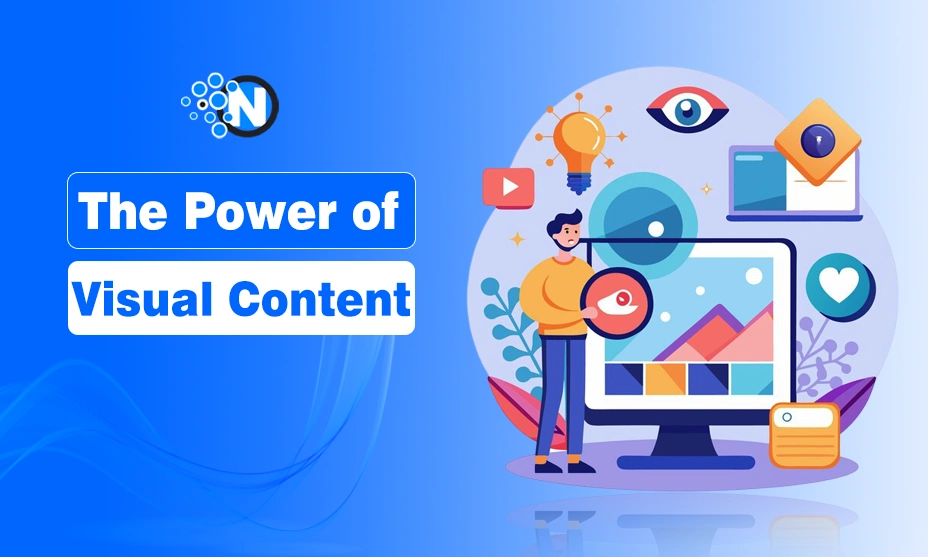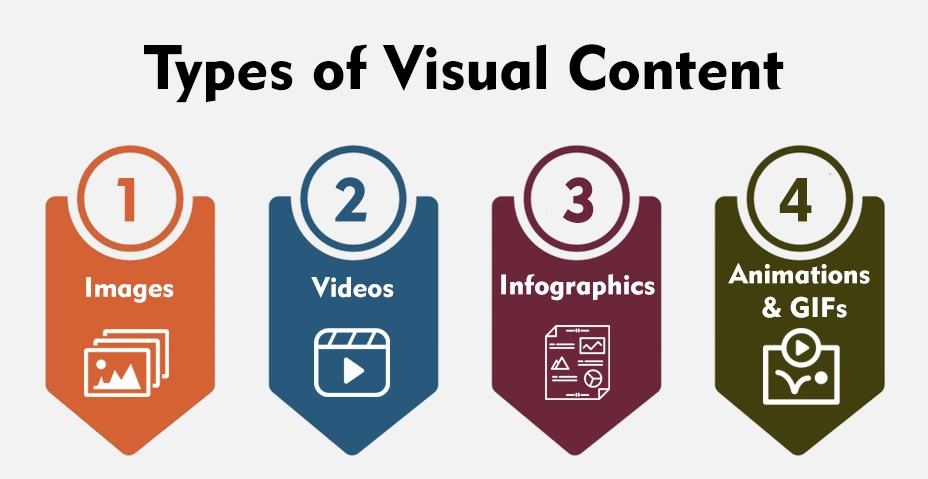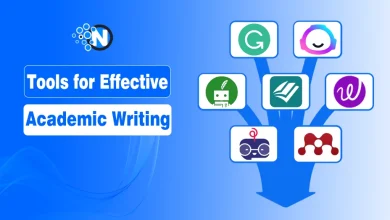The Power of Visual Content – Types and Best Tips to Know

I used to rely solely on text-heavy content for marketing – until I saw my first infographic go viral. It wasn’t just engagement that skyrocketed; conversions, shares, and brand recognition all followed.
That moment reshaped my entire content strategy. Visual content isn’t just about aesthetics – it’s a storytelling tool that leaves a lasting impression. Consequently, it is to be a great weapon for cutting through the noise, properly delivering messages, and involving viewers.
But while it’s easy to throw up an image or video on your social media platforms, the real challenge is creating effective visuals that will resonate with your audience.
Therefore, I am going to go into what makes compelling visual content successful and how you can create yours!
What is Visual Content?
What is visual content, though? It speaks of any media tool – images, videos, and infographics – to communicate a message. Although uploading a random picture or video is simple by creating interesting visual material that appeals to your audience is the truly difficult task.
Small business can also use related visual content for their marketing purposes to get most out of their ad campaigns locally.
What is Visual Content Marketing? The marketing uses visual material to boost brand exposure, engagement, and conversions. It uses photos, videos, infographics, and other visuals to convey messages and engage audiences across platforms. Businesses can create effective, shareable content that resonates with their target audience through marketing strategy.
Visual Content Statistics to Know
1. Images, charts, and infographics are 43% more convincing than plain text when it comes to getting people to take action.
2. There is a clear preference for this format when discovering new objects, as 78% of individuals prefer to learn about them through short video content.
2. Tweets using videos receive 10 times as many interactions as those without any visual content.
4. Approximately 17.8% of marketers spend 20 hours or more per week producing visual content.
5. Content presented with relevant photos receives approximately 94% more views in comparison to information devoid of graphics.
Importance of Visual Content
Visual content is absolutely essential in marketing because it improves connection, involvement, and brand recall. Businesses should invest in visual content marketing for the following very convincing reasons:
- Increased Engagement: Posts with visual components get noticeably more interaction than those with merely text.
- Better Retention: Studies show that people retain 65% of information when paired with relevant images, compared to only 10% when reading text alone.
- Enhanced Learning: Visual learners find it easier to absorb information through graphics, charts, and videos.
- Boosts Conversions: Excellent visual material can affect decisions on purchase and increase sales.
Types of Visual Content
There are many different types of visual content, each with its unique purpose and audience. Here’s a quick rundown:
- Images: These can be photos or illustrations. Images are great for sharing on social media channels, as they’re easy to digest and shareable.
- Videos: Videos are an excellent way to showcase your product or service; they can also be used to share user testimonials or behind-the-scenes footage.
- Infographics: These visually appealing graphics break down complex information into digestible, easy to understand visuals.
- Animations & GIFs: Animated graphics are another way of visual content for small business to tell stories through imagery. They’re especially useful when paired with white papers or blog posts because they bring interest to boring topics like financial statements or company history timelines!
Small companies, especially depend on choosing the correct kind of graphic material. Explainer videos or infographics can help draw in fresh clients if that is the target. Conversely, graphics or GIFs can be more suitable to involve current clients.

Tips for Creating Effective Visual Content
The key to creating effective visuals is to make sure that your message is clear and concise. It’s also important to choose a format that will best fit your brand, audience and purpose. Here are some practices for doing just that:
- Use High-Quality Visuals: Low-resolution images and videos can harm your brand’s credibility. Ensure your content is professional and visually appealing.
- Keep It Short and Engaging: Attention spans are short. Whether it’s a video, infographic, or animation, make sure it delivers the message quickly.
- Maintain Consistent Branding: Use consistent fonts, colors, and designs to accentuate brand identification on all media.
- Use Video Editing Tools: Utilize online video editing apps to enhance video quality, add subtitles, and optimize formats.
- Optimize for Mobile: Make sure your visual material is mobile friendly since most consumers access it on their cellphones.
- Use Emotion Driven Content: Adding music or emotional storytelling elements can increase engagement and shareability.
Steps for Visual Content Creation for Social Media
Creating visual content for social media requires a strategic approach to maximize engagement and reach. Here are key strategies to enhance your social media presence with visual content:
- Understand Your Audience
- Use High-Quality Images and Videos
- Leverage Stories and Reels
- Incorporate Interactive Content
- Maintain Brand Consistency
- Schedule Posts Strategically
Final Verdict
It’s time to stop thinking about visual content as a supplement and start thinking of it as a fundamental part of your marketing strategy. You should use images, videos and other visual assets to engage with customers, drive traffic and build brand awareness.
Understanding the importance of visual content and implementing these best practices, you can create good, high quality visuals that leave a lasting impression on your audience.




